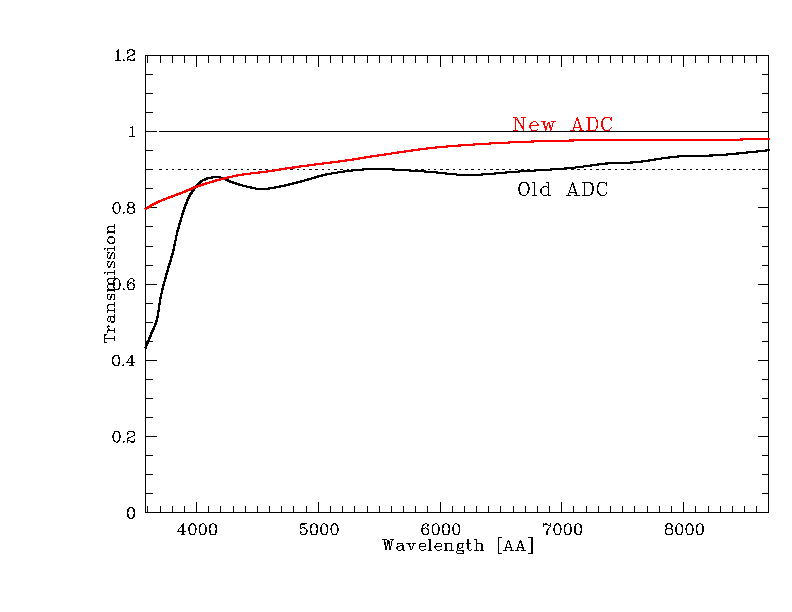InstrumentPerformance
Quality Control
| norm |
slow |
fast |
norm 2x2 binning |
slow 2x2 binning |
|
| Daily Health Check | 225kHz,1,low,1x1 | N/A | N/A | 225kHz,1,low,2x2 | N/A |
| Standard Calibrations | 225kHz,1,low,1x1 | 60kHz,1,high,1x1 | 625kHz,1,med,1x1 | 225kHz,1,low,2x2 | 60kHz,1,high,2x2 |
| Instrument Efficiency | 225kHz,1,low,1x1 | 60kHz,1,high,1x1 | 625kHz,1,med,1x1 | 225kHz,1,low,2x2 | 60kHz,1,high,2x2 |
CCDTests are here.
Daily Health Check
Since 2005-Nov-19, as part of the Calibration Plan, a Daily Health Check OB consisting of:
- In 225kHz,1,low,1x1 readout mode
- 2 BIAS exposures
- 2 FLAT exposures
- 1 ThAr+Ne exposure
- 2 BIAS exposures
- In 225kHz,1,low,2x2 readout mode
- 2 BIAS exposures
- 2 FLAT exposures
- 1 ThAr+Ne exposure
is executed each afternoon. This OB allows the verification of the health of the instrument and lamps as well as permitting an initialisation of the FEROS DRS for both 1x1 and 2x2 readout modes.
Standard Calibration Sets
As part of the Calibration Plan, sets of Standard Calibration consisting of:
- 5 BIAS exposures
- 10 FLAT exposures
- 6 ThArNe exposure (3 different exposure times)
- 6 ThAr+Ne exposure (3 different exposure times)
are acquired each morning in each readout mode used during the night.
Instrument Efficiency
As part of the Calibration Plan, the instrument efficiency, or more precisely the instrument throughput is measured for every night with FEROS SCIENCE observations via the observation of Spectrophotometric Standard stars.
ADC efficiency
The black curve shows the ADC efficiency. The transmission shows a decrease below 400 nm. Therefore, a new ADC with a better trasnmission in the blue part of the spectrum (red curve) has been orderer and is foreseen to replace the current ADC from period 78 on.

